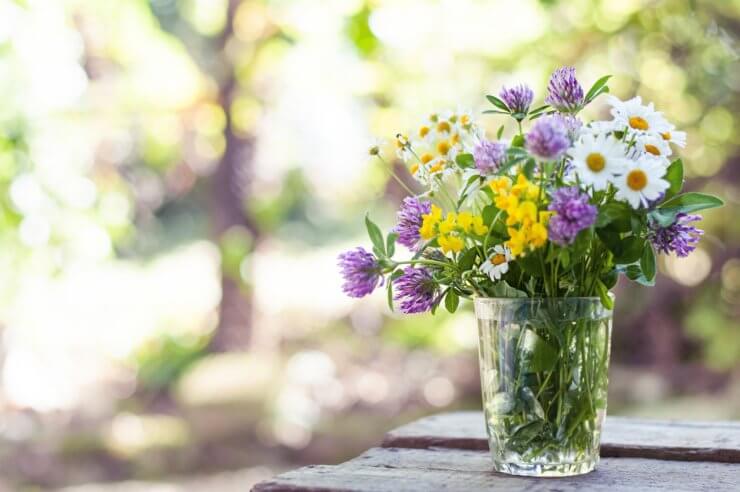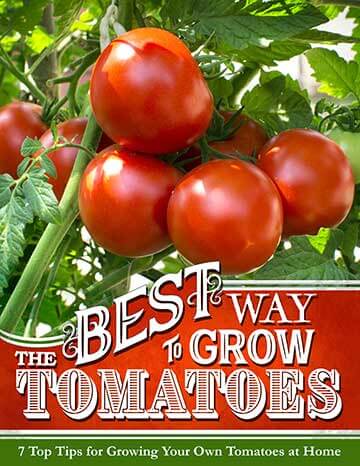
Cutting your flowers is a great way to naturally decorate the inside of your home and add a little color. Some gardeners even go as far as to specifically grow them to display them indoors. However, once they’ve been cut, they won’t last forever. Follow these tips to know how to keep your cut flowers alive and well for longer.
Discover 7 top tips for growing, harvesting, and enjoying tomatoes from your home garden—when you access the FREE guide The Best Way to Grow Tomatoes, right now!
1. Find the Perfect Spot
Once you’ve cut your flowers, consider where to place them. Certain species love the sun, while only a few can tolerate the shade. Look for what works best for what you currently have.
The windowsill is often a popular choice, either in the living room or kitchen. However, it’s important to minimize direct sunlight to avoid overheating. You can opt for the dining or coffee table instead for partial exposure.
2. Ignore the Myths
It’s important to ignore the old wives’ tales about how you can prolong your cut flowers. Aside from using up resources, you’re just spending time on a routine that would have minimal to no impact. Direct that energy to something else that would work instead.
For instance, many recommend dropping a penny into the vase since it’s primarily made of copper, which can fight off bacteria and mold. However, since 1982, they’ve been made of 97.5% zinc with minimal copper plating. It’s best to skip the tricks unless you have older coins.
3. Research What Kills Your Flowers
Gardeners should understand what their flowers need to care for them properly. It also helps to know what their sworn enemies are. Knowing their weaknesses gives you extra knowledge of what threatens their lifespan, and you can adjust your flower care accordingly. Here are a few examples:
- Dehydration: Remember to give your flowers a generous dose of water. It also helps to put them in a cooler space. Exposing flowers to higher temperatures generally makes them release moisture and wilt faster. Even if they are hardy, you wouldn’t want to risk putting them in such unfavorable conditions.
- Bacteria: Bacteria are another common enemy of cut flowers, especially since they may lack the nutrients to help them fight it off. Remember to use clean water when you’re storing or watering your blooms.
- Pests: While humble butterflies and bees are relatively harmless, other pests, like mosquitoes and beetles, tend to cause problems. You can pair your cut flowers with insect-repelling blossoms, or just gently shoo them away.
4. Utilize a Clean Vase
Pick out a nice, clean vase to put your cut flowers into. Scrub and wash it with soap to remove dirt and debris that would allow bacteria to fester. If your container hasn’t been used in a while, opt for warm water to eliminate all the gunk.
Also, make sure the vase is large enough to accommodate your flowers. Too many first-time gardeners like to put too many stems into a smaller mouth, but it’s important to give each of them breathing room.
5. Trim the Excess Parts
Before storing away your cut flowers, make sure you’re removing any excess parts that can take up space and nutrients. The leaves are often a nice touch, but they need to go — especially if they’re already wilting.
You also want to keep the stem at just the right height. Be sure to cut it at a 45-degree angle to improve water absorption. Use a knife or garden-grade scissors to get a clean cut.
6. Change Water Frequently
If the water is cloudy or murky, dump it and replace it with fresh water. You should change it every two or three days, but you can treat this rule loosely. Remember to be careful when moving your cut flowers out of the way while transferring the water. You can also give the stems a little snip at the same angle for a refresh.
7. Feed Your Flowers
While your cut blooms are missing their roots, you can still nourish them by adding flower food to the water. Some seed packets will include this, or you can buy new ones at the store. There are also DIY recipes like mixing lemon juice with sugar before pouring it into the fresh water.
Help Your Flowers Last Longer
Storing cut flowers is more straightforward than you’d think, and you get to appreciate their presence and practice present-moment awareness in the process. Follow these tips to give your blossoms a few extra days or even weeks to shine.
Discover 7 top tips for growing, harvesting, and enjoying tomatoes from your home garden—when you access the FREE guide The Best Way to Grow Tomatoes, right now!




